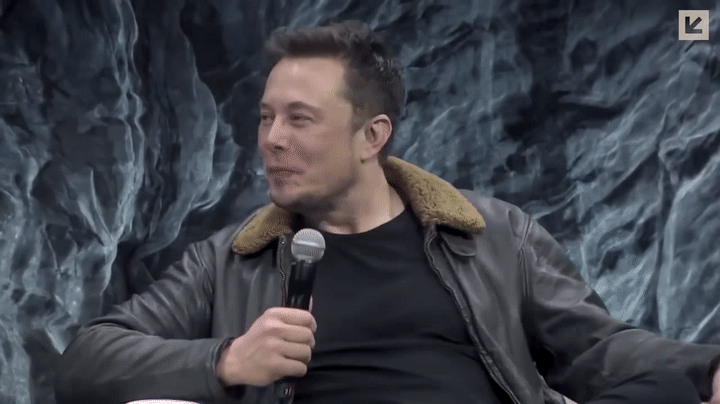
Space Exploration

Hello everyone!
As space exploration is one of my favorite topics, I decided to create this website for my PYP Exhibition. This website tour introduces you to the ways human conducts space exploration in the past, present and future. In addition to detailed photographs that I've compiled during my research, I've also created stop-motion videos related to the topic.
Please enjoy!

Pleas
Please wait around 10 seconds for the website to load for best experience!
Please don't scroll! Click button to proceed on each page to enjoy the tour!
Best viewed with Microsoft Edge or Apple Safari on widescreen display


Christopher Columbus
Explore and Navigator
"You can never cross the ocean unless you have the courage to lose sight of the shore."
Christopher Columbus
Photo: DeAgostini/Getty Images


Elon Musk
Founder, CEO, lead designer of SpaceX
"I think that when I say multi-planet species, that's what we really want to be. It's really being a multi-planet species and having civilization and life as we know it extend beyond Earth to the rest of the Solar System, and ultimately to other star systems."

Reasons and benefits of space exploration
We explore space because it is in our nature to grow and expand our territory. Space exploration requires unusual problem solving skills and pushes scientists to think outside the box to advance technology.
More importantly, space exploration could be the salvation of the human race. As we find different planets and build bases or settlements there, the entire population of humans can disperse , inhabiting different planets like we do in different cities on Earth!
So if something goes wrong on Earth, we will not become extinct like the dinosaurs!
Space is infinite.
As we plan our journey in space, which takes time, effort and money, we cannot just blindly decide on a place without knowing if it is worth visiting. That is why we have invented tools and robots such as telescopes, probes and rovers to gather data for scientists and researchers.






Meanwhile in a galaxy far, far away...

Hubble Telescope Animation
CG: Space Telescope Science Institute
Telescopes are used to observe distant planets and galaxies so that scientists can learn more about the universe. There are telescopes on land but a powerful one in space can see further.
That is why we have the Hubble Space Telescope. It took photographs of nearby planets in our solar system as well as thousands of galaxies.

Voyager 1 Animation
CG: NASA
Telescope helps us see from a distance but probes can let us see up close in detail.
Probes are unmanned spacecraft that can travel to planets to closely monitor them with its many sensors. Researchers then learn more about a planet's characteristics such as atmosphere, weather or the surface environment.
An example of these probes are the Voyager 1 and Voyager 2. These probes gave NASA scientists a good look at Jupiter and Saturn.

Perseverance Landing Animation
CG: NASA

Once a probe has identified a planet's environment is tame enough for landing vehicles, rovers are sent to explore the surface in detail. Rovers are planetary exploration robots equipped with a lot of sensors - they concentrate on taking soil samples which may allow scientist to detect for water, which is a vital resource for humans.
An example of such rover is NASA's Perseverance. This rover went to Mars this year and bought with it an helicopter drone. This helicopter, Ingenuity, is the first helicopter on another planet.
Once scientists can determine that a planet is reasonably safe for humans to explore. Spaceships can transport them to the destination.
These spaceships are known as human-rated space vehicles. It takes a long time with immense effort and a lot of money to design and build these vehicles as the astronauts’ lives are at stake. Even so, there is always a chance of accident or failure.
The future success of human space exploration depends on how good we can make these spaceships but let us now take a look at the more famous space vehicles...









Vostok 1
Picture: European Space Agency
Vostok 1 was the first human-rated spacecraft built by the Soviet Union (now known as Russia). It carried the Russian, Yuri Gagarin, into orbit around the Earth in 1961. He was the first human to reach space.



Transformers: Dark of the Moon - Moon Landing Animation
Film: Paramount Dreamworks
NASA's Saturn V is a super heavy rocket built for the journey to the moon. Saturn V was the biggest rocket at the time, with the rocket is made up of mostly fuel storage and boosters. The crew are inside the Apollo Command and Service Module (Apollo CSM) and the Lunar Lander housed at the tip of the rocket.
Upon reaching the moon, the Apollo CSM would orbit around it and deploy the Lunar Lander to touchdown on the moon. Neil Armstrong, Buzz Aldrin were inside the lunar lander while Michael Collins stayed in the Apollo CSM on that first historic trip to the Moon in 1969.

STS-121 Discovery Launch
Video: NASA
The space shuttle was the first reusable spacecraft for transporting astronauts and supplies to the International Space Station. It gets to outer space using two gigantic solid rocket boosters. After detaching from the shuttle, the boosters fall into the ocean.
5 space shuttles were used, they were Columbia, Challenger, Discovery, Atlantis and Endeavour. Unfortunately, two space shuttles, Columbia and Challenger were lost, killing a total of 14 astronauts.
The space shuttle program was therefore shut down because it was way too expensive to run.

Falcon 9 Cape Canaveral Landings
Video: SpaceX

Crew Dragon Abort Test
Video: SpaceX

The Falcon 9 is a self-landing and reusable rocket made by the SpaceX company founded by Elon Musk in 2002. SpaceX is a rocket manufacturer and a transport company, helping customers send their cargo or supplies and recently NASA astronauts via the Crew Dragon module. Being the only company in the world with a human-rated reusable rocket system, SpaceX is a close partner with NASA in upcoming missions.

Starship SN10 Test Flight
Video: SpaceX




The Starship is a fully reusable two stage rocket that is under development by SpaceX. It’s first stage is called Super Heavy and the second stage is also called Starship. With more than 2 times the power of the Saturn V rocket, Starship will be able to carry 2 times the payload weight but more than 10 times cheaper. Hence, SpaceX expects it to be the primary transport vehicle to Mars.
Starship returns to the Earth using its signature maneuver called the “belly flop”. During landing, Starship will free fall with its belly facing the ground. Right before it is going to "crash", Starship will ignite all of its engines and rotate back to a vertical orientation for a dramatic landing.
SpaceX develops Starship in a manner unlike other rocket companies, all its Starship tests flights are live on Youtube and they usually end with a giant explosion! Fail to win!

Tesla Roadster in Space
Video: SpaceX
Why is the Tesla Roadster in here? It is actually the first car in space. It was sent into space by SpaceX as a dummy payload. It is traveling around the solar system right now.
You can find out where it is now on this website.
The Future
We now live in an exciting time thanks to SpaceX's inexpensive and super fast progress in its development of the Starship. This allows NASA to aggressively pursue the colonisation of Mars.

Lunar Starship Concept
CG: SpaceX

Gateway Station Concept
CG: NASA
The moon base could be established as a stepping stone to Mars, which is one of NASA’s Artemis Program’s aim.
The program also consists of a Gateway space station orbiting the moon supporting lunar landings in the future.

SpaceX Starship
CG: SpaceX
We know more about Mars than any other planets in the solar system. More than 30 spacecraft have been sent to study it since 1965 and the number of missions is increasing as more rovers are sent. Ultimate aim is to send humans to mars too, using SpaceX’s Starship.

Jumping Salute
Photo: NASA




